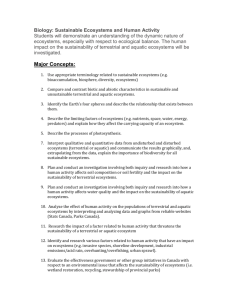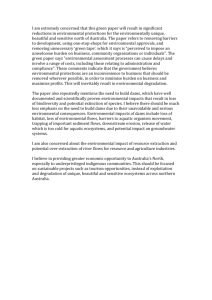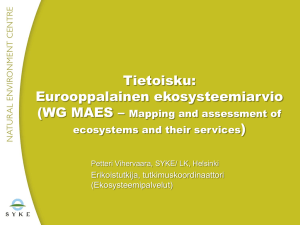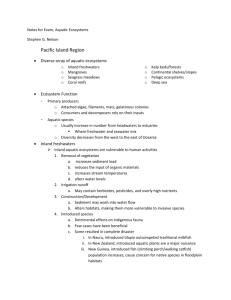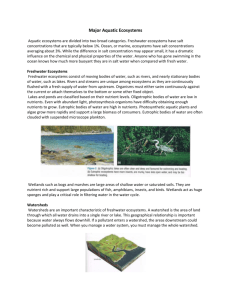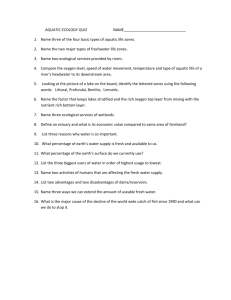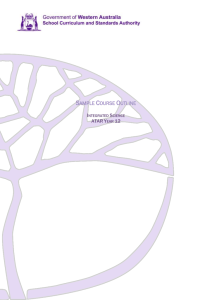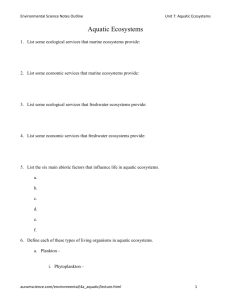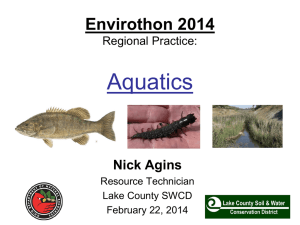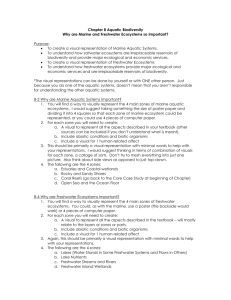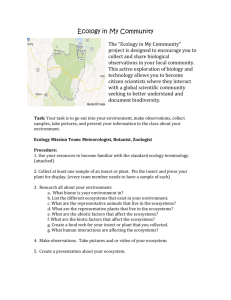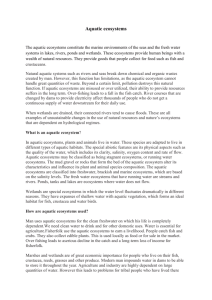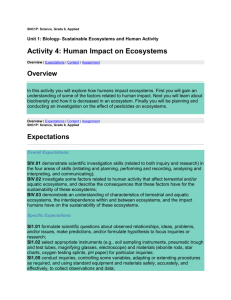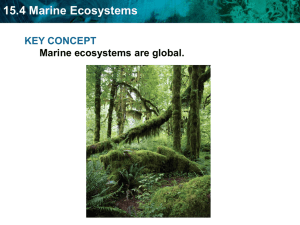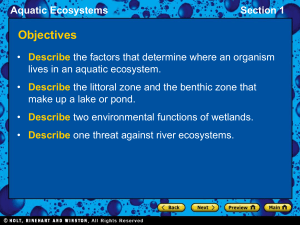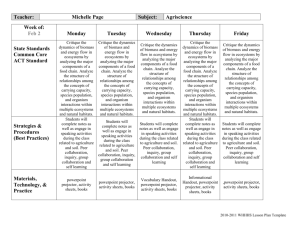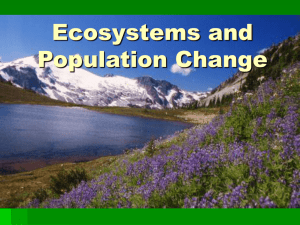Biome review and Aquatic Ecosystems
advertisement
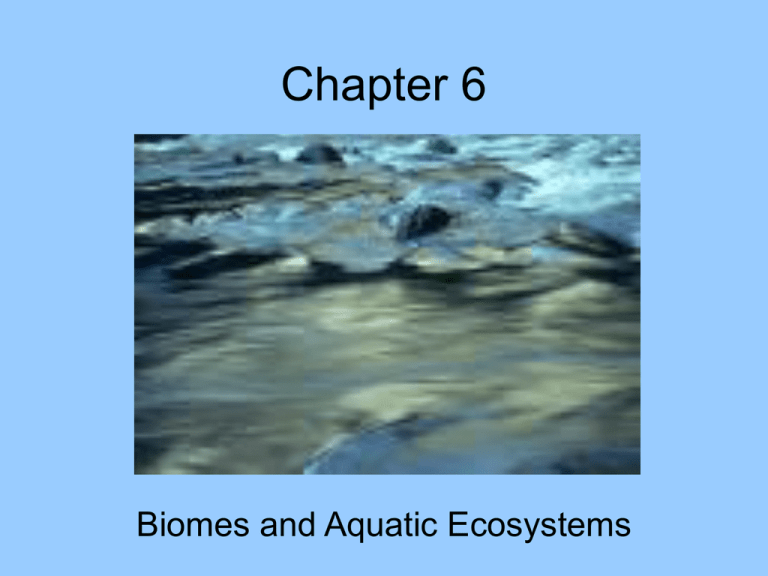
Chapter 6 Biomes and Aquatic Ecosystems Aquatic Ecosystems Aquatic Ecosystems • • • • Differ from terrestrial ecosystems Temperature variations usually less pronounced Salinity a major factor (Fresh water vs. salt water) Three major groups of aquatic organisms1. Plankton (Microscopic, carried by current) a. Zooplankton = Protozoans (animals) b. Phytoplankton = Photosynthetic 2. Nekton- Large, swimming organisms (fish, turtles, etc.) 3. Benthos- Bottom dwelling organisms/Sessile and mobile Plankton, nekton or benthic? Freshwater Ecosystems • Flowing-water ecosystems change greatly between the source (start) and the mouth (end). • Source headwater tributaries flood plain meanders Estuary (Salt marsh) mouth delta The Hudson River • ADK’s to NYC: Lake Tear of the Clouds …Albany…Newburg… NYC (delta) …Atlantic ocean mouth Mount Marcy- Elevation 5344 ft. Headwater Streams: are usually shallow, cold, swiftly flowing, & highly oxygenated. Rivers & Steams: Flowing-water Ecosystems. Streams with fast currents have organisms with adaptations such as sucker-mouth catfish, fish with streamlined bodies, and black fly larvae (suction disc). Estuaries • Where “rivers meet the sea” • Very productive ecosystems! Standing-Water Ecosystems Lakes & pondsStanding-Water ecosystems are characterized by zonation. 1)Littoral zone 2) Limnetic Zone 3) Profundal Zone “Lit”toral Zone: shallow-water area along the shore. Plants include; Cattails, bur reeds, aquatic plants (Elodea), & Algae. This is the most productive section of a lake. Animals include; Frogs, tadpoles,worms, crayfish, insect larvae, fishes like Perch, carp, & Bass. Water striders, whirligig beetles are often on the surface. Limnetic Zone: the open water beyond the littoral zone(away from the shore). This area extends as far as light can penetrate (photosynthesis). Main organisms are phytoplankton & zooplankton. Large fish are found here most of the time. 3) Profundal Zone: this is the deepest zone. Small bodies of water typically lack a profundal zone. Thermal Stratification: the layering of large temperate lakes. Temperature changes drastically with depth. Summer: Cool water remain at the bottom. A thermocline separates the warm (less dense) water from the cool deep section. More oxygen dissolves (D.O.) in water at cooler temperatures. Fall Turnover: falling temperature causes a mixing of the the layers. Mixing ceases when the lake reaches a uniform temp. throughout. Mangrove Forests are habitat for most larval shellfish, game fishes (Mullet, migratory birds, Manatee, mudskippers, snakes, crabs, & monkeys. Mangrove Swamps of the World The Open Ocean The open ocean is or is not a highly productive ecosystem? Coral Reefs Coral Reefs of the world Changes of the Florida Everglades




